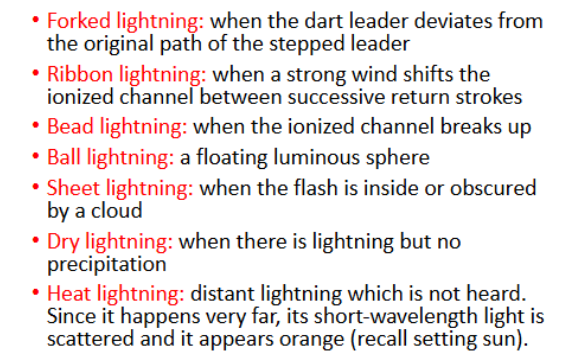Unit 5 Test Severe Weather
1/21
There's no tags or description
Looks like no tags are added yet.
Name | Mastery | Learn | Test | Matching | Spaced |
|---|
No study sessions yet.
22 Terms
Which agency issues watches and which agency issues warnings?
Watches are possibilities of storms! They are issued by the storm prediction center
Warnings mean it’s time to take action! They are issued by local National Weather Service office.
What is the direction of winds in the warm sector?
Southerly winds
What are the differences between ordinary storms, multicell storms, and supercell storms?
Ordinary thunderstorms have isolated updrafts and downdrafts; they are short and weak storms. They have minimal wind shear and severe weather is rare.
If relatively isolated thunderstorms develop when vertical wind shear becomes more "moderate," they tend to become multicells. Multicell thunderstorms are a "group" or "family" of single cells at various stages of their life cycles. They can last for several hours and they have moderate wind shear.
Supercell storms are strong, mesocyclone (rotating), and they last several hours. They have strong wind shear and are almost guaranteed to have severe weather and chance of tornadoes.
In lightning, what connects the leader/cloud and the ground?
Stepped leader
Identify in general where charges are in a thundercloud. (Positive/negative)
Negative charges are located near the bottom/middle of a cloud
Positive charges are located near the top of the cloud
lower clouds have a weak positive charge
Where would one find the greatest frequency of thunderstorms, severe thunderstorms?
The greatest frequency of thunderstorms in the US is along the Gulf of Mexico, especially in Florida. (unstable atmosphere)
The greatest frequency of severe thunderstorms in the US is in the Great Plains. (warm unstable air is dry and shallow)
What are the common triggers for thunderstorm development?
Sufficient moisture
Rising air/unstable atmosphere
Strong convection
The buoyant force causes the updraft to grow stronger
Frontal boundary
Unequal surface heating
Surface convergence and divergence aloft
Topographic barriers
Arrival of cold air aloft
In a thunderstorm life cycle (which phases), when are you most likely to have updrafts, downdrafts, and/or both?
Updrafts are only entity present during the CUMULUS stage
Updrafts and downdrafts are present during the MATURE (most intense) stage
Downdrafts are most prevalent during the DISSIPATING stage, because the updraft begins to collapse and the storm follows.
What is the criteria for a severe thunderstorm warning?
large hail
winds gusting above 50 kts
development of a tornado
What caused many plane crashes in the 70s?
Microbursts/downbursts
What is the primary difference between an ordinary cell and supercell?
The updraft in an ordinary cell is non-rotating, and the updraft and downdraft interfere with each other.
The updraft in a super cell is rotating, causing the updraft and downdraft to be separated.
Where would one find the greatest frequency of hailstorms?
In the central us, in the great plains
What is the minimum size of hail that makes it a severe hailstorm?
One inch diameter, about the size of a quarter.
How long does it take sound to travel one mile after a lightning strike?
It takes sound 5 seconds to travel one mile after a lightning strike.
Divide seconds by 5 for miles or by 3 for km.
If a storm is 5 miles away how long would it take to hear the thunder
25 seconds
What are the different types of lightning?
Forked lightning
Ribbon lightning
Bead lightning
Ball
Sheet
Dry
Heat

Where would one find squall line thunderstorms?
Squall line thunderstorms show up as a line along or in front of an advancing cold front.
What are 3 of ted Fujita’s contributions to the science?
The Fujita (F) scale measures tornado intensity based on the severity of the damage
Microbursts/downdrafts and the danger that they caused in aviation
Identification of suction vortices, smaller vortices within tornadoes
What are two examples that distinctly categorize a negative cg strike and a positive cg strike?
Negative CG strike
originates from the base of the cloud
flickers multiple times because it is composed of multiple rapid electrical strokes.
Positive CG strike
originates from top of the cloud
one solid electrical strike does not flicker
How does a thunderstorm training event occur and what is the usual impact?
Thunderstorm training occurs when new storms repeatedly from on the gust front of previous storms, moving over the same location.
Flash floods can occur, excessive rainfall, prolonged severe weather.
Briefly explain why thunderstorms create a green, bluish sky
Hail is present in the storm,
Explain the formation process of a hailstorm (3 sentences)
when strong updrafts carry raindrops high into freezing altitudes, where they freeze and grow by collecting more supercooled water, forming layers, until they become too heavy for the updraft and fall as ice